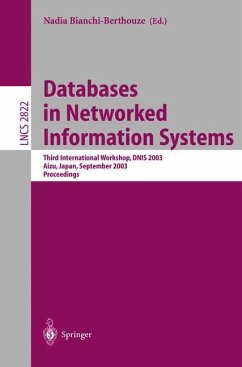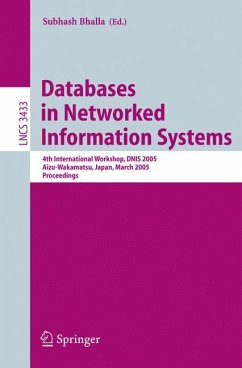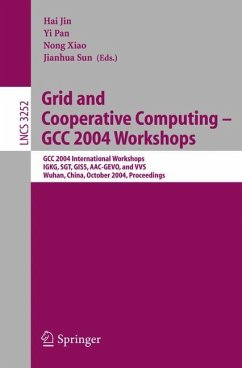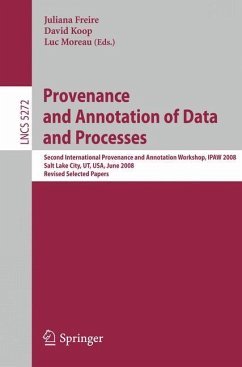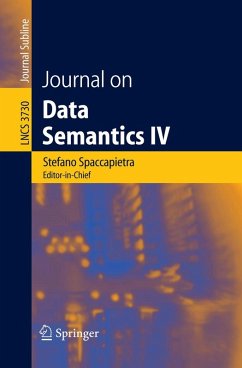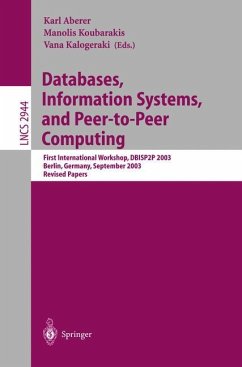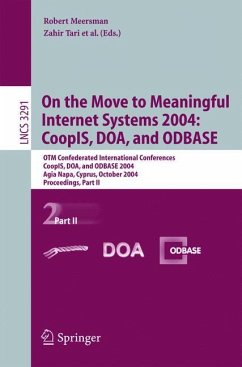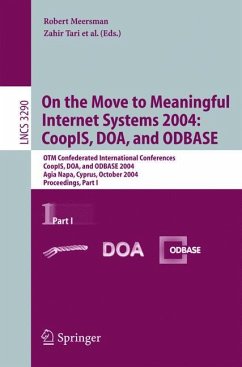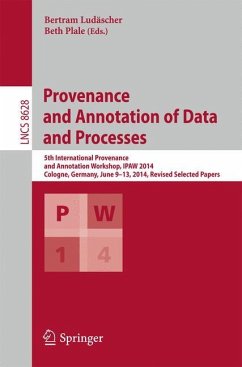
Semantics of a Networked World. Semantics for Grid Databases
First International IFIP Conference on Semantics of a Networked World: ICSNW 2004, Paris, France, June 17-19, 2004. Revised Selected Papers
Herausgegeben: Bouzeghoub, Mokrane; Goble, Carole; Kashyap, Vipul; Spaccapietra, Stefano

PAYBACK Punkte
20 °P sammeln!
This book constitutes the thoroughly refereed post-proceedings of the First International Conference on Semantics of a Networked World: Semantics for Grid Databases, ICSNW 2004, held in Paris, France in June 2004.
The 16 revised full papers presented togehter with 2 invited papers and 7 posters were carefully reviewed and selected from close to 50 submissions. The papers are organized in topical sections on semantic data integration, peer-to-peer systems, semantics for scientific applications, interoperability and mediation, and global services and schemas.
The 16 revised full papers presented togehter with 2 invited papers and 7 posters were carefully reviewed and selected from close to 50 submissions. The papers are organized in topical sections on semantic data integration, peer-to-peer systems, semantics for scientific applications, interoperability and mediation, and global services and schemas.
The explosion in data exchange fostered by the success of the Web has restated semantics as a kernel issue in the development of services providing data and - formationtousersandapplicationsworldwide.Thisnewlydesignatedconference serieson SemanticsfortheNetworkedWorld uni?esintoasingleframework the previous series on Database Semantics and Visual Database Systems that the IFIP WG 2.6 has been o?ering since 1985. Whereas the intent of the conferenceseriesistoexploreinterestingresearchissuesrelatedtosemantics,the themeforthe2004editionis SemanticsforGridDatabases .Gridcomputing,a new ?eld concentrating on ?exible, secure, coordinated resource sharing among dynamic collections of individuals, institutions, and resources (also referred to as virtual organizations) , has gathered momentum in the context of providing shared infrastructures for large-scale scienti?c computations and data analysis. Similarly, P2P computing has attracted substantial attention. Currently, attention is devoted to the provision of middleware services to makecomputationalresourcesinteroperableatthetechnicallevelandtoincrease the e?ciency of use of physical resources. However, as Grid and P2P computing infrastructures are being increasingly adopted, they are likely to have typical problems of information overload that manifest themselves in any large-scale infrastructure for information and application sharing (e.g., the WWW). The need for resource discovery, application and service interoperability, integration and composition manifest themselves in these infrastructures. The ability to interoperate at the semantic level will largely determine the continued success and utilization of these infrastructures.






